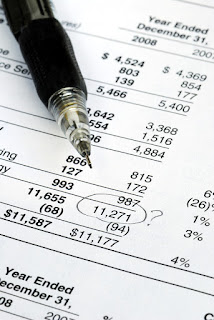If you have been robbed or financially taken advantage of in
any way you may need to hire a forensic accountant in order to seek justice. A
forensic accountant is a trained professional that combines a host of skills to
investigate financial cases from the inside out.
There are many reasons people hire Forensic Accountants, ranging
to include suspected company fraud and even divorce. You can accuse someone of taking millions of
dollars from you, but you must prove it on paper for the courts to take it as
truth. Forensic Accountants serve as expert witnesses in charge of researching,
analyzing and then presenting the facts in a persuasive and undisputable manner
to judges, jurors and mediators.
Attorneys, insurers, creditors and many other entities hire
forensic accountants to conduct research and present findings as witness
testimony in court. It takes an experienced
accountant for the job, someone great at crunching all the right numbers to
reveal a raw look at overall damages in totality. As well as someone that knows
where to look to find the most telling of damages. This helps prove exactly how
much money you are owed to make right a wrong.
You May Benefit From A Forensic Accountant If…
You Suffered
Commercial Damages: Forensic accountants provide the expert witness
testimony you need to prove unjust commercial losses in court. They not only
present the facts but they do the research to pinpoint complex matters
involving breach of contract, product liability, fraud, construction claims,
intellectual property infringement and so forth.
Employees Were Caught
Stealing From Your Business: Business/employee fraud relations are complex.
Every last dollar that was taken out from under you deserves to be returned.
The only way to know the full sum total of damages is to have a forensic accountant
investigate the situation. Many methods are used throughout these types of
investigations including tracing of funds, suspect interviews, forensic
intelligent gathering and more.
You Are Going Through
A Messy Divorce: Divorce is one of the most stressful life experiences, but
a good forensic accountant can be a valuable member on your team. When
splitting assets, a forensic accountant is often required to make sure all
parties are given their fair share. They are also hired to uncover how much
income one should pay for spousal or child support.
Your Commercial
Insurance Is Not Following Through On Claims: If you are not being properly
supplemented through commercial insurance you may need this type of accountant
to investigate coverage issues as well as calculate how much is owed in losses. The actual losses of the insured individual are
assessed in regards to their current financial picture to determine how much
coverage is owed.
You Have A Personal
Injury Claim: Under these sorts of circumstances, the investigator puts
together a sum total picture of losses and damages including everything from
medical bills to lost wages. These claims may involve wrongful termination,
medical malpractice, wrongful death cases and more.
You Are Involved In A
Shareholder or Partnership Dispute: If partners are having disputes over
who gets what, a forensic accountant will take a look at the entire picture,
down to every last number. As a result, they come up with the exact amount of
compensation or benefits owed to each shareholder or partner.
When To Hire A Forensic Accountant
It’s better to hire a forensic accountant early on in a
lawsuit so that the opposing party does not have the opportunity to retain your
expert. A forensic accountant knows how to get the discovery process moving quickly
in the right direction, saving you time, money and hassles from the start.
Forensic accountants are useful in different elements of
court cases. In fact, many cases would end much differently without their
expert testimony. A forensic accountant is only as good as his or her track
record. You want to hire someone that knows their stuff and has a strong
background in accounting and financial analysis, as well as strong
communication skills and the drive to never give up.





